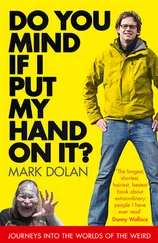Robert Monroe - Journeys out of the body, Practical Guidebook
Здесь есть возможность читать онлайн «Robert Monroe - Journeys out of the body, Practical Guidebook» весь текст электронной книги совершенно бесплатно (целиком полную версию без сокращений). В некоторых случаях можно слушать аудио, скачать через торрент в формате fb2 и присутствует краткое содержание. Жанр: Старинная литература, на английском языке. Описание произведения, (предисловие) а так же отзывы посетителей доступны на портале библиотеки ЛибКат.
- Название:Journeys out of the body, Practical Guidebook
- Автор:
- Жанр:
- Год:неизвестен
- ISBN:нет данных
- Рейтинг книги:5 / 5. Голосов: 1
-
Избранное:Добавить в избранное
- Отзывы:
-
Ваша оценка:
- 100
- 1
- 2
- 3
- 4
- 5
Journeys out of the body, Practical Guidebook: краткое содержание, описание и аннотация
Предлагаем к чтению аннотацию, описание, краткое содержание или предисловие (зависит от того, что написал сам автор книги «Journeys out of the body, Practical Guidebook»). Если вы не нашли необходимую информацию о книге — напишите в комментариях, мы постараемся отыскать её.
Journeys out of the body, Practical Guidebook — читать онлайн бесплатно полную книгу (весь текст) целиком
Ниже представлен текст книги, разбитый по страницам. Система сохранения места последней прочитанной страницы, позволяет с удобством читать онлайн бесплатно книгу «Journeys out of the body, Practical Guidebook», без необходимости каждый раз заново искать на чём Вы остановились. Поставьте закладку, и сможете в любой момент перейти на страницу, на которой закончили чтение.
Интервал:
Закладка:
seconds, instead of the standard duration of 3 to 5 seconds. After performing these, cycling may begin.
Awakening without movement, despite all its importance, is not a goal in and of itself, and also not worth suffering over. When awakening, if there is great discomfort, something itches, a need to swallow arises, or any manner of natural reflex, it is better to deal with it and then act according to practices recommended when movement upon awakening happens.
Not all movements upon awakening are real and, if only for this reason alone, when movement occurs, indirect techniques should follow.
Interesting Fact!
Up to 20% of sensations and actions that happen upon awakening are not real as they seem, but are phantom.
False sensations occur in widely diverse ways. People often do not understand what is going on with them without having experienced the phase. For example, a person may think they are scratching their ear with their physical hand when they are really using a phantom hand. A person may hear pseudo-sounds in the room, on the street, or at the neighbor’s without noting anything unusual. Or, a person may look around the room without knowing that their eyes are actually closed. If a practitioner recognizes such moments for what they are, they may immediately try to separate from the body.
CYCLES OF INDIRECT TECHNIQUES
Thus far, indirect techniques used for phase entrance and techniques for separation in the phase have been covered. Conscious awakening and the best times to practice it have also been examined.
Now, a specific algorithm of action for indirect techniques will be presented. Following this algorithm promises quick and practical results.
Algorithm of Action upon Awakening:
1. Testing Separation Techniques within 5 SecondsLike the previous observation of separation techniques, a third of successful attempts with indirect techniques yield immediate success upon the attempt of a separation technique due to the fact that the first seconds after waking up are the most useful for entering the phase. The less time that has elapsed after awakening, the better.
Conversely, if one lies down expecting something to happen, chances quickly dissipate.
Thus, upon awakening, preferably without first moving, a practitioner should immediately try various separation techniques, like rolling out, getting up, or levitation. If a technique suddenly started to yield results for approximately for 5 seconds, then separation from the body should be attempted. Sometimes inertia, difficulty, or a barrier will arise during a separation attempt. No attention should be given to these problems. Instead, resolve to separate - decidedly and aggressively climb out of the body.
Keep in mind that trying to immediately separate upon awakening is a skill of the utmost importance; one that is worth honing from the very beginning, never forgotten.
2. The Cycle of Indirect Techniques to Use if One is Unable to Separate
If separation does not occur after several seconds, it most likely means that separation will not occur, regardless of elapsed time in effort. This is where the practitioner must resort to other techniques.
The practitioner should already have chosen a minimum of three primary or secondary techniques that suit a practical repertoire. Here is where the techniques are put into action.
Nota Bene! In order to give a specific example, we will examine the use of three specific techniques, which should be replaced with a tested and chosen set of techniques. The following operational techniques have been used as examples: observing images (a), phantom wiggling (b), and listening in (c).
After an unsuccessful attempt at separating, the practitioner immediately starts observing the void behind the eyes. If images begin to appear within 3 to 5 seconds, observation should continue without scrutinizing the images in detail, or the image will evaporate.
As a result of this action, the image will quickly become more and more realistic and colorful, engulfing the practitioner. If everything comes together correctly, a sudden translocation into the picture will occur, or, when the picture becomes very realistic, attempt to separate from the body. If nothing happens after 3 to 5 seconds, then the practitioner should transition to the technique of phantom wiggling.
For 3 to 5 seconds, the practitioner quickly searches the entire body for a part that can be wiggled. Or, the entire period of time is spent in an attempt to wiggle a specific body part: a finger, hand, or leg. If the desired effect occurs, then the practitioner should continue with the technique and achieve the maximum possible range of movement. During this process, a number of things can happen, including spontaneous separation, a successful separation attempt, free movement of the wiggled part, or the presence of sound or vibrations. All of these events are of great advantage. If nothing wiggles over the course of 3 to 5 seconds, then the practitioner should move on to listening in.
The practitioner should try to detect an internal sound. If the sound is there, listen and try to amplify it. As a result, the noise may grow into a roar and spontaneous separation will occur, separating through the use of a technique will be possible, or vibrations will occur. If no noise occurs over the course of 3 to 5 seconds, then the entire cycle should be repeated.
It is beneficial to examine the reason behind the use of a set of three indirect techniques. This is motivated by the fact that the body often reacts to techniques in very peculiar ways. With one person, a technique may work one day and not work on another day, which is why if only one technique is used, even a very good technique that works often, a practitioner can miss out on a lot of different experience through the lack of variety in practice. Thus, a practical repertoire should consist of several techniques.
Interesting Fact!
Sometimes, the first technique that works for a practitioner never results in a repeat of phase entrance again, although other techniques that were not immediately effective at the novice stages of practice later begin to work regularly and successfully.
3. Repeating the Cycle of Indirect Techniques
If the first cycle of 3 techniques does not yield any clear results, this does not mean that all is lost. Even if the techniques do not work, they still draw the practitioner closer to the phase state and it is simply necessary to continue using the techniques by again observing pictures, phantom wiggling, and listening in – and repeating this process at least three times.
Having performed one cycle of techniques, one can easily go on to doing a second cycle, a third one, a fourth one, and so on. It is quite probable that during one of these cycles, a technique will suddenly prove itself, even though it had not been working at all just a few seconds beforehand.
A serious practitioner should commit to a minimum of 4 cycles.
The problem lies in the fact that it is psychologically difficult to do something that has shown itself not to work, and one may give up taking further action, even though one could be at the cusp of falling into the phase. Keep trying, and then try again, and again! There have been cases where it took twenty cycles to produce results. A monumental effort, yes, but one worth the outcome.
4. Falling Asleep with the Possibility of Trying Again.
If a practitioner is unable to enter the phase after performing cycles and attempts to separate, or even if everything worked out, it is still better to go back to sleep to facilitate subsequent attempts.
Читать дальшеИнтервал:
Закладка:
Похожие книги на «Journeys out of the body, Practical Guidebook»
Представляем Вашему вниманию похожие книги на «Journeys out of the body, Practical Guidebook» списком для выбора. Мы отобрали схожую по названию и смыслу литературу в надежде предоставить читателям больше вариантов отыскать новые, интересные, ещё непрочитанные произведения.
Обсуждение, отзывы о книге «Journeys out of the body, Practical Guidebook» и просто собственные мнения читателей. Оставьте ваши комментарии, напишите, что Вы думаете о произведении, его смысле или главных героях. Укажите что конкретно понравилось, а что нет, и почему Вы так считаете.










